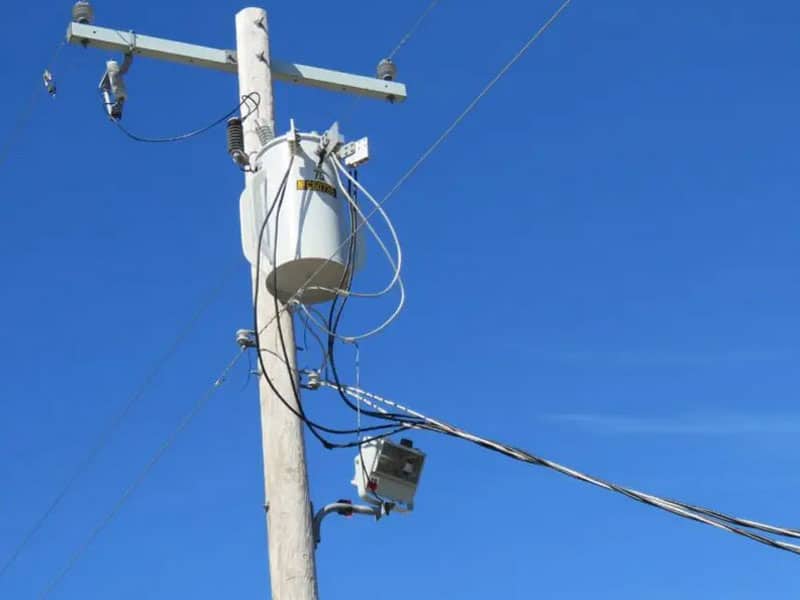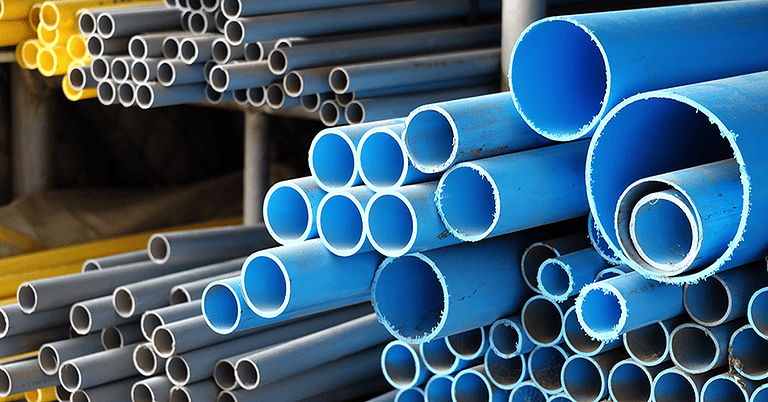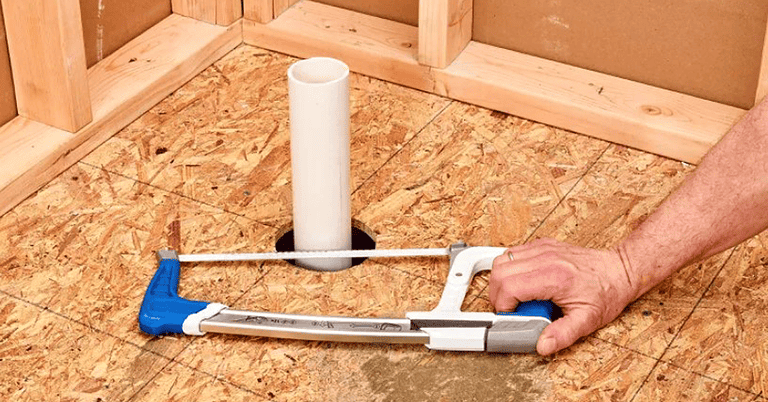Cost To Run Power 1000 Feet
Did you know that the cost to run power lines for a distance of 1000 feet can vary significantly? It’s no coincidence that factors such as terrain difficulty, cable type, and location are crucial in determining the overall expense. There are trade-offs to consider whether you’re considering underground or overhead lines. While underground pipes may be pricier, they offer increased safety during heavy rains and protection against tree damage. On the other hand, overhead lines are easier to identify and fix issues with, making them suitable for flood-prone areas.
Electric companies consider labor, equipment, trenching, conduit installation, and wire expenses when estimating costs. Additionally, local codes and regulations impact project costs. By hiring licensed professionals and adhering to these guidelines, you can ensure a successful and cost-effective power line installation. In this article, we’ll delve deeper into the factors influencing the cost of running power over 1000 feet and explore strategies to minimize expenses.

What Factors Influence the Cost to Run Power 1000 Feet?
Several key factors influence the overall expense when considering the cost to run power lines for 1000 feet. Understanding the different options between overhead and underground power lines is crucial. The costs associated with conduit and trenching for running power lines should also be considered. The price per pole and transformer also play a significant role in determining the total cost.
Furthermore, distance is a significant factor that impacts overall expenses, as longer distances typically result in higher costs. On average, running a new electric service line can range from $4,500 to $20,000, depending on these factors. (Read Can I Use Duct Tape Instead Of Electrical Tape)
Understanding Different Power Line Options: Overhead vs Underground
To better understand the cost of running power lines for 1000 feet, let’s explore the advantages and disadvantages of different options: overhead power lines and underground power lines.
- Underground power lines:
- Unaffected by trees or debris
- Safer during heavy rains
- Less power loss
- Vulnerable in flood-prone areas
- Overhead power lines:
- Easy identification and fixing of issues
- It can be installed in flood-prone areas
- Cheaper than underground lines
Let’s delve into the conduit and trench costs for running power lines.
Conduit and Trench Costs for Running Power Lines
Don’t you love the thrill of digging trenches and installing conduits for your electrical project? When running power lines underground, the cost is influenced by factors like the distance of 1000 feet. Trenching fees typically range from $600 to $1,200, including professional labor and equipment. Conduit installation can add a charge of $4 to $8 per linear foot. These expenses are essential in ensuring a successful and efficient power line installation. Speaking of costs, let’s now explore the crucial factors that determine the cost per pole and transformer.

Cost per Pole and Transformer: Essential Factors
Poles and transformers play a crucial role in bringing electricity to your home, and understanding the factors determining their pricing is essential. The cost per pole can range from $1,200 to $5,600 depending on various factors such as material, height, and installation requirements. Similarly, the price of a new transformer can vary widely, ranging from $3,000 to $20,000 or more. These costs should be factored into your overall budget for installing power lines.
Now let’s explore how distance impacts the overall cost of running power lines.
How Distance Impacts Cost
Imagine the impact distance can have on your budget when installing electrical lines. The cost to run power 1000 feet can vary significantly depending on the distance from the nearest power pole. For underground electrical lines, installation costs can range from $4,500 to $20,000 or even higher. This means that every linear foot counts when calculating the total project cost. (Read Can You Put A Space Heater On Carpet)
Now let’s explore the average cost of running a new electric service line.
Average Cost of Running a New Electric Service Line
Distance plays a crucial role when considering the average cost of running a new electric service line. For every 1,000 feet, you need to run lines; the cost can range from $4,500 to $20,000 or even higher in some cases. Factors such as terrain difficulty, cable/conduit used, location, and utility companies can influence the final price. In the next section, let’s explore how electric companies estimate costs to get a more accurate estimate for your specific situation.
How do Electric Companies estimate Costs?
When evaluating the electric company’s cost-per-foot calculation, it’s essential to consider labor costs, equipment expenses, and material prices. These elements can significantly impact the overall cost of running power to a new location. Utility companies are crucial in determining these costs, as their pricing structures and policies vary.
It’s advisable to compare costs from different power companies to ensure you get the best deal for your project. Additionally, when planning for a 200 amp service, additional cost considerations need to be considered, such as upgrading electrical panels and wiring requirements.
Evaluating the Electric Company’s Cost per Foot Calculation
To accurately evaluate the electric company’s cost-per-foot calculation, it’s essential to consider factors such as terrain difficulty, type of cable/conduit used, location, and level of work difficulty.
Terrain difficulty: Steep or rocky terrain may increase costs.
Type of cable/conduit: Different materials have varying prices.
Location: Distance from the nearest power source can impact costs.
Work difficulty: The complexity of the installation process affects pricing.
Now let’s delve into the cost implications of running power to a new location.
Cost Implications of Running Power to a New Location
When evaluating the cost to run power 1000 feet, it’s essential to consider the cost implications of running power to a new location. Factors such as installing underground lines versus overhead cables and working with the local power company can significantly affect costs. The transmission line and power supply requirements also considerably determine the price per foot for running a new electric service.
Now let’s explore the role of utility companies in cost determination.
The Role of Utility Companies in Cost Determination
Utility companies play a pivotal role in determining how much it’ll set you back to bring electricity to your new location. The local utility will run the electrical lines along the desired linear feet when dealing with underground lines. They will also handle conduit installation and may require utility poles. The cost of these services can vary depending on the specific power company you’re working with.
Next, we’ll compare costs from different power companies to help you make an informed decision.
Comparing Costs from Different Power Companies
Comparing prices from various utility companies can save money and help you decide on bringing electricity to your new location. Below is a comparison table showing the cost estimates provided by different power companies for running power lines underground for a distance of 1000 feet. (Read Stihl Ms391 Upgrades Guide)
| Power Company | Cost Estimate |
|---|---|
| Company A | $8,000 |
| Company B | $9,500 |
| Company C | $10,200 |
| Company D | $11,000 |
| Company E | $12,500 |
By comparing these estimates, you can find the most cost-effective option that suits your needs. Once you have chosen a power company to install and run underground feeder lines to your property, you can proceed with signing a contract for service and discussing any additional costs, such as utility poles or equipment. Let’s explore other cost considerations for a 200-amp service.
Additional Cost Considerations for 200 Amp Service
To make sure your electrical system meets your needs, it’s essential to consider some additional factors when upgrading to a 200 amp service. Running the power underground or overhead depends on the type of service you want. If you choose to run the power underground, it could cost more due to the need for trenching and conduit installation. On the other hand, overhead lines may be less expensive but are more susceptible to damage.
Now let’s explore connecting your property to the nearest power source.
How to Connect Your Property to the Nearest Power Source?
If you want to connect your property to the nearest power source, here’s a step-by-step guide to running a new electric service.
First, contact your local power company and inquire about their process for connecting properties.
Next, obtain two to three in-person estimates from licensed, bonded, and insured electrical line installers.
Finally, consider factors such as labor costs, trenching expenses, conduit installation costs per foot, and the cost of installing a residential transformer before deciding.
A Step-by-Step Guide to Running New Electric Service
Embarking on installing a new electric service can be an illuminating journey, shedding light on the intricacies and costs involved in running power for 1000 feet. Before you start, call and ask your local utility company about their requirements. Next, dig the trench to lay the electrical conduit. Don’t forget to have an engineer inspect the site before proceeding. Once everything is in order, you can install electricity and run the power line. Researching the codes and regulations in your area is essential to ensure compliance. The following section will explore how to run power lines underground: a detailed guide.

How to Run Power Lines Underground: A Detailed Guide
First and foremost, understand that running power lines underground offers numerous benefits and ensures the safety and reliability of your electrical service.
Here are three key points to consider when running power lines underground:
- The distance: Determine the length of wire needed to bring electricity from the road to your house, typically measured in feet.
- A detailed guide follows a step-by-step process, including trenching, conduit installation, and wiring techniques for underground power lines.
- Cost per foot: Calculate the price per linear foot for burying the wire underground based on labor, equipment, and materials.
Electrical Line Installation and Connection: What to Expect
When connecting your electrical lines, it’s essential to consider the professionals’ expertise, the necessary permits and inspections, and the breakdown of costs. For example, imagine you’re building a new home in a rural area and need to connect your electrical lines to the power grid. You would want to ensure that you hire experienced electricians who are familiar with installing new electrical service lines in your area, handle all necessary permits and inspections for compliance, and provide you with a detailed estimate that includes any potential additional costs.
| Factors | Description | Importance |
|---|---|---|
| Expertise of Professionals | Hiring experienced electricians | High |
| Permits and Inspections | Handling all necessary paperwork | Medium |
| Breakdown of Costs | Providing a detailed estimate, including additional costs | High |
To prepare for a new transformer installation, you’ll need to consider several key steps and considerations. (Transition sentence)
Preparing for a New Transformer Installation
To get ready for a new transformer installation, you’ll want to consider a few important factors and make sure you’re well-prepared.
Here’s what you need to do:
- Building a new transformer requires careful planning. Plan the layout and determine the best location for the transformer based on your needs.
- Contact a good company that offers transformer installation services. Ask for their name and phone number so you can easily reach them.
- Use your experience or consult with professionals to ensure the proper transformer installation. This will help avoid any potential issues down the line.
- If necessary, coordinate with your utility company to install a utility pole where the transformer will be placed.
Now that you’re prepared for the new transformer installation let’s discuss overcoming challenges in power line installation.
Overcoming Challenges in Power Line Installation
Overcoming challenges in power line installation is like navigating through a dense forest, carefully maneuvering around obstacles, and finding the most efficient path to ensure a successful and reliable electrical connection. When running power lines over 1000 feet, several factors come into play. The cost to run power 1000 feet can vary depending on the terrain difficulty, cable/conduit used, location, work difficulty, utility companies, discount offers, and whether you choose the overhead or underground installation. To minimize costs when running a power line over 1000 feet, it is essential to consider various strategies and options available. (Read Can You Lay A Propane Tank On Its Side)
| Challenges | Solutions | Benefits |
|---|---|---|
| Terrain Difficulty | Hiring experienced professionals familiar with challenging terrains | Smooth installation process |
| Cable/Conduit Choice | Opting for PVC conduit, which is cost-effective and durable | Lower material costs with long-lasting performance |
| Utility Coordination | Working closely with utility companies to streamline the installation process | Efficient project completion |
| Pole Placement | Strategically placing poles for optimal support and accessibility | Enhanced structural integrity for power lines |
To minimize costs when running a power line over 1000 feet, it’s essential to address these challenges effectively—by considering terrain difficulty, choosing appropriate materials like PVC conduit, coordinating with utility providers efficiently, and strategically placing poles along the route for proper support and accessibility. These measures can help ensure a successful installation while keeping expenses under control.
How to minimize costs when running a power line over 1000 feet?
How to Minimize Costs When Running a Power Line over 1000 Feet?
When running a power line over 1000 feet, there are several strategies you can employ to minimize costs. One such strategy is the optimal use of PVC conduit, which helps reduce material and installation expenses. Understanding power line installation costs per linear foot is also crucial in effectively making informed decisions and budgeting. Additionally, it is essential to consider the role of utility poles in controlling installation costs, as they can provide cost-effective solutions for routing power lines. Implementing practical tips and strategies can significantly reduce overall power line installation costs while ensuring an efficient electrical service line extension.
Optimal Use of PVC Conduit to Reduce Costs
Using PVC conduit can be a cost-effective solution for reducing expenses while running power lines underground. The cost of conduit installation can vary by location, but on average, it’s around $4 to $8 per linear foot. When considering the amp service and distance needed for your project, look at the utility poles in your area, as they may already have conduit installed. Call local electrical contractors for estimates to understand power line installation costs per linear foot.
Understanding Power Line Installation Costs per Linear Foot
Save money on your electrical project by understanding the expenses of installing power lines per linear foot. The cost of power line installation varies depending on factors such as distance, whether underground or overhead, and the type of soil and vegetation in the area. Underground facilities can cost $10 to $25 per foot, while overhead installation costs $5 to $15 per foot. By knowing these costs, you can make informed decisions about your project and save money.
Now let’s explore the role of utility poles in controlling installation costs.
Role of Utility Pole in Controlling Installation Cost
Utility poles are crucial in determining the efficiency and ease of power line installation. They provide support and stability for overhead power lines, allowing easy access and maintenance. The utility pole installation cost can vary depending on material, size, location, and accessibility. Here is a table showcasing the average cost range for utility pole installation:
| Utility Pole Material | Average Cost Range |
|---|---|
| Wood | $1,200 – $5,000 |
| Steel | $3,500 – $7,500 |
| Concrete | $4,000 – $10,000 |
Understanding the cost implications of different utility pole materials can help you make informed decisions to reduce overall power line installation costs. Moving forward into the next section about practical tips for reducing these costs…
Practical Tips for Reducing Overall Power Line Installation Costs
To minimize your expenses during the power line installation process, let’s explore some practical tips to help you reduce overall costs and make the project more budget-friendly.
First, consider hiring experienced professionals familiar with local codes and regulations to avoid costly mistakes.
Additionally, researching available discounts and offers from utility companies can save money.
Lastly, utilizing equipment efficiently and wisely can help streamline installation and lower labor costs.
Now, let’s delve into strategies for cost-effective electrical service line extension.
Strategies for Cost-Effective Electrical Service Line Extension
To further reduce the overall cost of your power line installation, it’s crucial to employ strategies that optimize efficiency and minimize expenses. Consider the following practices:
- Carefully plan the route and layout of your electrical service line extension.
- Take advantage of any available discounts or offers from utility companies.
- Prioritize hiring experienced professionals who can efficiently complete the installation.
- Familiarize yourself with local codes and regulations to ensure compliance.
Now, let’s delve into a case study exploring the cost to run power 1000 feet for a 200-amp service.

Case Study: Cost to Run Power 1000 Feet for a 200-Amp Service
There are several vital points to consider when considering the cost to run power 1000 feet for a 200-amp service. The initial setup and running of a new electric service can involve various expenses such as labor costs, equipment and materials, permits, and professional help from licensed contractors.
Unexpected expenses may arise when running power lines underground due to factors like terrain difficulty and tree removal. Overall, the total cost of running power 1000 feet for a 200-amp service can vary depending on these factors. Still, it’s essential to reflect on the experience and determine if it was worth the investment in terms of efficiency and long-term benefits.
Initial Setup and Running of New Electric Service
One interesting statistic to consider is that the cost to run power lines for 1000 feet can range from $4,500 to $20,000, depending on various factors such as terrain difficulty and location.
When setting up a new electric service, there are several vital components to consider:
- Hiring a licensed contractor
- Obtaining necessary permits
- Trenching and conduit installation
- Running the power lines
These factors contribute to the overall expenditure for running the power.
Itemized Expenditure for Running the Power
Take a moment to imagine the meticulous process of installing new electric service, from hiring a licensed contractor and obtaining permits to trenching and conduit installation, all leading up to the exciting moment when the power lines connect your home to a reliable source of electricity. The cost breakdown for running power lines includes labor costs, equipment expenses, and materials. Trenching fees range from $600-$1,200 on average, while conduit installation costs around $4-$8 per linear foot.
Remember that there may be unexpected expenses when running power lines underground.
Unexpected Expenses: Running Power Lines Underground
To avoid surprises, remember that unforeseen expenses can arise when you bury your power lines underground, adding to the overall installation project. These additional costs may include:
- Permit fees: Depending on your location, you may need to obtain permits for burying power lines underground, which can range from $500 to $2,000.
- Tree removal and land clearing: If trees or vegetation are in the path of the power lines, they’ll need to be cleared at an additional cost of $80 to $350 per tree and $1,500 to $3,000 per acre for land clearing.
- Meter box installation: Installing a meter box for your underground power lines can cost anywhere from $500 to $2,100.
- Electrical panel replacement: If your current electrical panel needs upgrading or replacing to accommodate the new underground power lines, this can cost $850 to $2,500.
These unexpected expenses should be considered when considering the overall cost of running power 1000 feet for a 200 amp service.
Overall Cost of Running Power 1000 Feet for 200 Amp Service
With unexpected expenses lurking around every corner, burying power lines underground for a 200 amp service becomes an electrifying adventure of budgeting and decision-making. The overall cost of running power 1000 feet for a 200 amp service can range from $4,500 to $20,000, with the potential to rise even higher. Factors such as terrain difficulty, type of cable/conduit used, location, work difficulty, and utility companies can all influence the final price.
Reflecting on the experience: was it worth it?
Reflecting on the Experience: Was it Worth It?
Looking back, you can’t help but wonder if the investment in burying your power lines underground was genuinely worth it. Here are four key considerations to help you evaluate the experience:
- Cost: Underground power lines can be up to 14 times more expensive than overhead lines. Assess whether the benefits outweigh the higher upfront costs.
- Protection: Underground lines are better protected from damage caused by trees or debris and remain safe during heavy rains.
- Power Loss: Underground lines experience less power loss compared to overhead lines.
- Vulnerability: However, it’s important to note that underground lines may be more vulnerable in flood-prone areas.
Reflecting on these factors will give you a clearer understanding of whether burying your power lines was a worthwhile investment for your specific circumstances.
Conclusion
In conclusion, several factors come into play when considering the cost to run power 1000 feet. Terrain difficulty, cable type, location, and work difficulty all impact the overall cost. Hiring professionals and adhering to local codes are crucial for a successful and cost-effective installation.
Underground lines offer safety benefits but come at a higher price than overhead lines. By understanding these factors and taking necessary measures, you can minimize costs while ensuring a reliable power source for your property.







